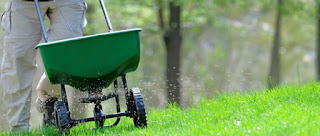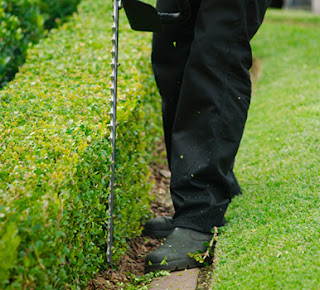
The lawn and the garden are the dresses for your house just like the paint is its makeup and the balustrade and blinds its ornaments. It’s essential that before you go for the make-up and ornaments, you should be properly dressed.
The lawn and garden in a tip-top condition is a dream to every home owner. The affluent can afford professionals for the purpose but keeping up the good looks without paying heftily requires some initiative from your side. It’s not as much a challenge that you might think it to be; however, it’s the time constraints and a lack of expert know-how that usually water-down the urge. However, while managing the time is entirely your department, we are here to provide some useful tips to keep your lawn and Gardening Palmwoods in tip top condition.
Just like you, the grass on the lawn need break from time to time. Summers are the best time to provide them with the required TLC (adjustments to suit the different weather conditions) and work wonders after you have stressed them out. Take under consideration both wet and dry cycles; droughts and heavy rain are both bad for your lawn’s and garden’s health. We’ll look at the ill effects of heavy rain first.
The woes of a soggy lawn first manifest through ‘Fairy rings’ - fungi that thrive during wet cycles. While sweeping them off with a broom is the most common practice, it is not getting rid of completely the persisting problem. For that, you need to dig down (about a feet), replace the soil and sow it again with fresh grass seed. The Fairy Rings can be spotted easily, for there will be rings of grass appearing stronger or weaker than the rest around. If you don’t want to go digging right at first, going down the drastic route of digging out 1ft (30cm) of soil, try all-over spiking and feeding the lawn to see if extra nitrogen will even out the growth.
Next, it’s the ‘Red thread’, flared up by heavy downpours on a low-fertility soil. The best time to look for them is in the late summer; if you come across any irregular patches of dying grass with pink or red strands, know it is it! The only way to escape from it is feeding both the soil and the grass. Apply the feed during springs and summers but you can also do it during fall. September and October feeding will require an autumn lawn feed. Dry but is it dead?
But above everything, a green, green lawn is all about the roots being in good health. Mow them down to an inches length to reduce the stress on the roots. Also, look for Clover, weeds and thatch and Lawn Mowing Merrimac helps up to a great deal with that. Or, you can use the weed-pulling tools or a suitable weed-removing spray.
Always Remember:
A thatch or a thin layer of dead grass protects roots in dry spells whereas thick layers prevent water and feed from reaching the roots; become waterlogged and spongy easily and this, in the long run, weakens the grass. Use a rake once every two months to clear thatch; if it’s autumn, then once.
Lastly, your lawn must never be uneven; bumps and humps weaken the grass. Even it out and sow the grass seeds in August and September, resulting in better germination, for the soil will be warm and there will be plenty of natural nitrogen moving around within.
The lawn and garden in a tip-top condition is a dream to every home owner. The affluent can afford professionals for the purpose but keeping up the good looks without paying heftily requires some initiative from your side. It’s not as much a challenge that you might think it to be; however, it’s the time constraints and a lack of expert know-how that usually water-down the urge. However, while managing the time is entirely your department, we are here to provide some useful tips to keep your lawn and Gardening Palmwoods in tip top condition.
Just like you, the grass on the lawn need break from time to time. Summers are the best time to provide them with the required TLC (adjustments to suit the different weather conditions) and work wonders after you have stressed them out. Take under consideration both wet and dry cycles; droughts and heavy rain are both bad for your lawn’s and garden’s health. We’ll look at the ill effects of heavy rain first.
The woes of a soggy lawn first manifest through ‘Fairy rings’ - fungi that thrive during wet cycles. While sweeping them off with a broom is the most common practice, it is not getting rid of completely the persisting problem. For that, you need to dig down (about a feet), replace the soil and sow it again with fresh grass seed. The Fairy Rings can be spotted easily, for there will be rings of grass appearing stronger or weaker than the rest around. If you don’t want to go digging right at first, going down the drastic route of digging out 1ft (30cm) of soil, try all-over spiking and feeding the lawn to see if extra nitrogen will even out the growth.
Next, it’s the ‘Red thread’, flared up by heavy downpours on a low-fertility soil. The best time to look for them is in the late summer; if you come across any irregular patches of dying grass with pink or red strands, know it is it! The only way to escape from it is feeding both the soil and the grass. Apply the feed during springs and summers but you can also do it during fall. September and October feeding will require an autumn lawn feed. Dry but is it dead?
But above everything, a green, green lawn is all about the roots being in good health. Mow them down to an inches length to reduce the stress on the roots. Also, look for Clover, weeds and thatch and Lawn Mowing Merrimac helps up to a great deal with that. Or, you can use the weed-pulling tools or a suitable weed-removing spray.
Always Remember:
A thatch or a thin layer of dead grass protects roots in dry spells whereas thick layers prevent water and feed from reaching the roots; become waterlogged and spongy easily and this, in the long run, weakens the grass. Use a rake once every two months to clear thatch; if it’s autumn, then once.
Lastly, your lawn must never be uneven; bumps and humps weaken the grass. Even it out and sow the grass seeds in August and September, resulting in better germination, for the soil will be warm and there will be plenty of natural nitrogen moving around within.

